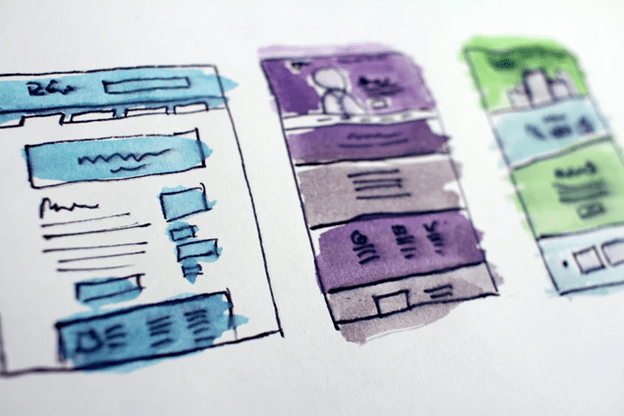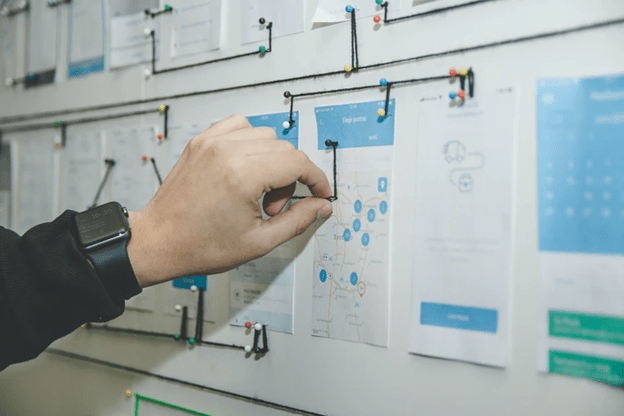With so many online businesses available today with fantastic designs, website psychology has become a significant factor in user retention. Many elements produce emotional effects from the reader. The beauty of it is that you can influence these feelings, which may result in purchases.
Here are some views on the psychology of web design and how you can use it to influence the consumer’s choice.

Understanding Consumer Behaviour
Learning about the science of website design can be daunting. When it comes to any psychological discussions, it’s best to start with a definition. In this case, let’s look at what consumer behavior really means.
To simplify, it’s the human study of how people and groups choose, buy, and use different services and products to satisfy their needs. Once you grasp the mental process from deciding to purchasing, it’ll be easier to set up effective website designs.
Consumer Influences
Ultimately, it comes down to discovering the main buying influences you can incorporate into your psychology design. Build these factors into your content marketing strategy, and you’ll have a winning recipe for success.
Four different external and internal influences may affect a person’s decision to pay for a product or service. Here’s a quick look at them:
- Culture: Different subcultures may have an impact, such as regions, race, nationality, and religion.
- Class: Groups within the hierarchy of classes will have similar tastes, values, and interests.
- Social: These factors look at various groups in society, such as families, friends, status, and roles.
- Personal: You can target the same audience with regard to age, financial situation, lifestyle, ego, and values.
Psychological Impact of Website Design
Now that you’ve seen how factors can influence buying power, let’s look at which aspects of your website design you can use to win the reader over.
Colour
It’s normal for a business to use its brand colors on the site. With that in mind, different colors have varying effects on readers. Not only does it affect how they feel, but also if they stay on the page.
Neutral colors you can use to balance your lively brand hues include grey, white, and black shades. Cooler colors like green and blue are relaxing and more inviting. You can also try warm colors for a sense of creativity, but be careful of striking ones that may cause anxiety.
Space
It always looks better with content that is more structured on a page. However, ensure that you don’t use up all the room with so much detail that it scares your readers away. To this end, you’ll want to invest in some ‘white space.’
White space refers to blank areas with no text or design elements. It rests the eyes and gives the reader time to relax. These areas are usually found in the side margins or around vital blocks of information.
Content
Content is essential for providing answers to the user intent. Your design should make it easier for them to find all the relevant solutions to their problems. The last thing any reader wants is to land on a busy page, swarming with text and shapes that make it hard to find information.
With the advance of SEO, you can get away with using images and videos instead of text content. They are more visually pleasing and can provide further details without drowning the page with words. You can also hide sections with toggles, which the reader can expand by clicking on it.
Typography
Many typefaces are available today, depending on the purpose of your site. Each conveys a different emotion to the reader, based on the style and flow of the font. It can also be messy when it’s hard to read what the words say.
Somes fonts present a traditional, formal approach. Others are more welcoming and casual. Ensure that you use the right typeface for your audience, or you may end up confusing them. A chilling, horror font would make no sense on a bonsai site, for example.

Advanced Website Psychological Studies
Once you learn the basics of website design psychology, you can take it a step further. It isn’t in the scope of this article to discuss these factors in detail. However, it’s worth pointing them out so you can see how involved it becomes.
Here are some advanced website psychology techniques:
- The Serial Position Effect: the reader’s ability to remember the first and last sections of a page while skipping everything in the middle.
- The Von Restorff Effect: drawing attention to elements that stand out, such as lighting, color, and animations.
- The Paradox of Choice: too many choices drive buyers away.
- The Zeigarnik Effect: incomplete areas compel users to take part in a call to action.
Conclusion
It’s clear that a website design can have a massive effect on the psyche of the reader. Armed with this knowledge, you’re better equipped to improve your site’s page to influence more user interaction.

